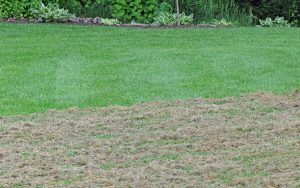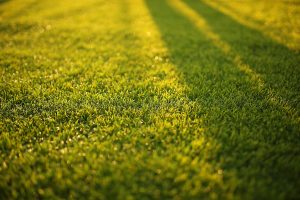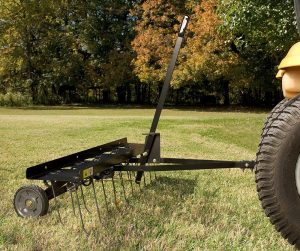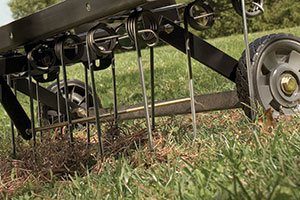
Get one step closer to beautiful turf– Give your lawn a good dethatching to keep your yard grass free of disease and insects, and to promote healthy soil!
If you live in the colder regions of the U.S., fall is the time to dethatch your cool season grass. Cool season grasses consist of Kentucky blue, fescues, ryegrass and bentgrass. Fall is actually a great time for lawn dethatching–the weeds are slowing down, the weather is cooler, and it can be done when you aerate and overseed your lawn as well. For small lawns, a lawn rake can help you pick up unwanted thatch. For larger lawns, we recommend a lawn dethatcher mower attachment, which uses sharp tines to comb your lawn and pick up thatch quickly.
What is Thatch?
Thatch is the layer between the above ground grass plants and the soil underneath. It contains organic material such as shoots, stems and roots that are alive and dead.
Micro-organisms in the soil help break down thatch so it doesn’t suffocate your lawn. However, thatch gets too thick when your lawn grass snowballs and produces organic matter that can’t be broken down.
Too much fertilizer and other poor land management practices cause thatch to thicken up. These stubborn plant parts are:
• Crowns
• Stem nodes
• Vascular tissue fibers and roots.
If you want to find out if you need to dethatch your lawn, just do this simple test: use a hand spade to remove a 3″ plug of soil. Examine the plug, and if there is more than a half inch of brown organic material, lawn dethatching is the way to go!
What is Lignin?
Twenty-five percent of thatch is made up of lignin. Lignin is an organic polymer that’s in the cell walls of almost all dry land plants. Lignin is resistant to micro-organisms breaking it down. Therefore, lignin encourages thatch growth. Certain grasses cause thatch development because they contain lignin-supporting tissues.
The Good & Bad of Thatch
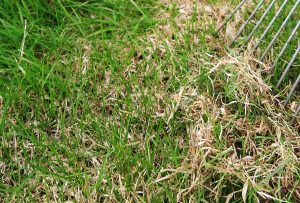
Thatch isn’t all evil, it just needs to be controlled so that it doesn’t get beyond a half inch thick. If your lawn only has a half inch of thatch, it protects the grass roots from temperature and moisture fluctuations. It also serves as extra cushioning when your kids and their friends are playing an energetic game of tag.
Now for the bad part. Here are three negatives to allowing thatch to grow too thickly on your lawn:
1. It traps moisture in the soil leading to fungal diseases during a string of rainy days. Plus, pesticides and disease controls stay stuck in the thatch layer creating acidic soil that kills off beneficial micro-organisms designed to eat the thatch.
2. When the heat is on during the summer, thatch will dry out causing your lawn grass to wilt and possibly die. Plus, you won’t be able to give your lawn that good soaking it needs every week because water can’t penetrate through the thatch.
3. Increased thatch equals insects and other pests living in your thatch layer. When you allow the thatch in your yard to grow too thick, you’re inviting pests to move in to eat various parts of your lawn.
When to Dethatch Your Lawn
When it comes to lawn dethatching, it’s vital to choose the right time. The time of year for this process is completely dependent on the type of grass you have and which climate you live in. As lawn dethatching can be a bit stressful on your grass, it’s ideal to do so right before your lawn’s most intense growth cycle. This ensures that there is enough time for the grass to recover. When it comes to cool season grasses, dethatching should be done in the early fall, as this is the best growing season for this type of grass. However, when it comes to warm season grasses, these grasses can be dethatched in either the spring or fall, just preferably not during the summer months.
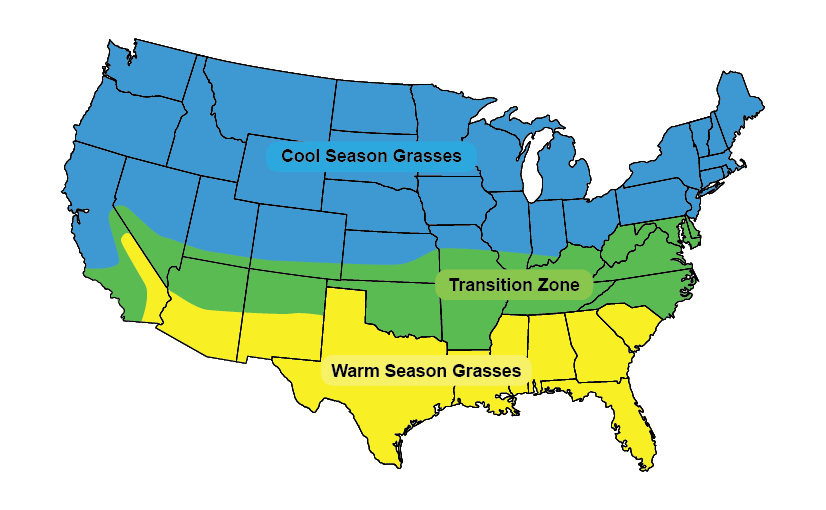
Warm season grasses include: Bahiagrass, bermuda grass, centipede grass, St. Augustine grass, and zoysia grass.
Cool season grasses include: Kentucky bluegrass, fescues, and the ryegrass family of grasses.
A few important tips on lawn dethatching:
- Do not dethatch when the soil is too wet, such as right after a hard rain. This could lead to a portion of the grass being pulled up by the root if there is too much softness to the soil. On the other hand, don’t dethatch when there’s a drought or extremely dry soil. When it comes to the right soil for lawn dethatching, moderation is the key.
- Before you hook up your dethatcher and start rolling, we suggest mowing your lawn to half its typical height.
- After you dethatch your lawn, be sure to go back and pick up the thatch off the surface of the lawn (a lawn sweeper works great for this!).
- Don’t mow so low! Believe it or not, but how you fertilize, mow and irrigate your lawn affects thatch growth. Poor lawn maintenance practices cause increased thatch. Raise your mower up as high as you can the next time you cut your grass.
How Brinly-Hardy Can Help You Dethatch
So, how do you get rid of that excess thatch that could be causing harm? By dethatching it! When you get rid of excess thatch in your lawn, you’re
allowing it to breathe and release carbon dioxide. Water and light can penetrate through your lawn giving it what it needs to maintain healthy soil and turf. With that being said, this whole process starts with having the right tools for the job– a rake may work for a small yard, but a mower attachment drastically cuts down your work time.
At Brinly-Hardy, we have the dethatching equipment you need to resuscitate your lawn.
Our premium lawn dethatchers come in three different choices:
• 40” Tow-behind dethatcher – Designed for small to medium-size lots
• 48” Tow-behind dethatcher – Perfect for large lawns
• 48” ZTR dethatcher – Designed for Zero Turn Radius mowers.
If you need a lawn dethatcher to relieve your yard of heavy thatch this fall, you can find the 48” Tow-behind at these retailers, and you can find the 40” Tow-behind dethatcher at these retailers.
Source: Landschoot, Peter, “Managing Thatch in Lawns.”



